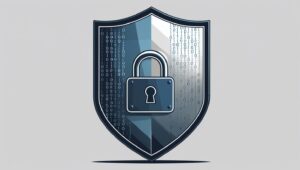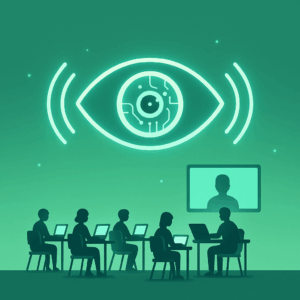As education steadily embraces immersive technologies, virtual reality (VR) classrooms are emerging as a transformative tool for student engagement and experiential learning. From simulating science labs to enabling historical walk-throughs, VR classrooms offer boundless possibilities for learners across age groups and geographies. But as institutions rush to integrate this futuristic learning environment, a critical oversight is surfacing—the lack of robust proctoring systems. Just like traditional online learning platforms, VR classrooms are susceptible to academic dishonesty, user manipulation, and security breaches. Without built-in proctoring, the integrity of assessments, interactions, and learning outcomes can easily be compromised.
We will explore why VR classrooms need proctoring as much as any other digital learning setup, how emerging technologies can meet this need, and what steps educators and technologists must take to ensure secure and credible virtual learning environments.
The Rise of VR in Education: A Double-Edged Sword
Virtual reality is no longer just a pleasure for gaming enthusiasts or tech enthusiasts. In the post-pandemic era, educational institutions are deploying VR for interactive training, virtual field trips, and remote classroom participation. According to the latest market research, the global VR in education market is expected to reach over $13 billion by 2026, with widespread adoption across the K-12, higher education, and corporate training sectors.
While these immersive environments improve engagement, they also introduce new forms of distraction and misconduct. Students can toggle between apps, mute instructors, or use alternate accounts. Unlike 2D video conferencing, where user activities are relatively visible, VR masks physical behaviors, making it harder to detect cheating, impersonation, or disengagement.
Without proctoring solutions embedded within the VR ecosystem, educational institutions are relying on the honor system—an unreliable safeguard when it comes to high-stakes assessments. The immersive experience, which is VR’s greatest asset, also becomes its biggest liability if left unmonitored.
It is one thing to read about our amazing solution and another to experience it in action.
Key Vulnerabilities in VR Learning Spaces
Despite the sophisticated simulation capabilities, VR classrooms are not immune to academic misconduct. They amplify some of the existing vulnerabilities found in online learning. Here’s how:
- Identity Impersonation: Students can use someone else’s login credentials to attend exams or participate in graded assignments. Without biometric or behavioral authentication, VR classrooms can’t confirm the real user’s identity.
- Environmental Blind Spots: Unlike webcam-based platforms, where a student’s surroundings can be observed, VR headsets obscure real-world contexts. This makes it difficult to detect if another person is present in the room, providing unauthorized help.
- Multitasking and Device Hopping: While immersed in VR, users can still switch devices or use voice commands to access unauthorized resources like search engines, notes, or even remote collaborators.
- Recording and Replay Manipulation: VR sessions can be screen recorded or scripted for playback. Students could potentially run pre-recorded avatars during tests to feign live participation.
These issues not only compromise exam integrity but also affect classroom interactions, attendance tracking, and peer collaboration—all of which are vital for credible education delivery.
Proctoring in the Metaverse: Technologies That Can Bridge the Gap
To build trust in VR learning environments, educational institutions need integrated, VR-native proctoring systems. Fortunately, emerging technologies are rising to the challenge:
- Eye-Tracking and Behavioral Analytics: Advanced VR headsets are now equipped with eye-tracking sensors that can monitor attention span, gaze fixation, and cognitive load. This data can be used to flag anomalies during an exam.
- Voice Recognition and Speech Analysis: By analyzing tone, speech patterns, and background noise, systems can detect impersonation or unauthorized collaboration. Voiceprint verification is also a strong tool for continuous identity authentication.
- Environmental Mapping: Some VR setups can scan the user’s surroundings via external cameras, detecting additional people, unauthorized materials, or distractions in the room.
- AI-Powered Avatars and Biometrics: Machine learning models can detect irregular behavior by comparing a user’s real-time movements with past performance. Biometric markers like hand gestures, posture, and typing patterns can further verify authenticity.
- Cloud-Based Surveillance & Audit Trails: All activity logs from the VR environment can be stored and analyzed post-session to detect anomalies, trends, and potential misconduct across multiple sessions.
By integrating these features into VR platforms, educational institutions can enforce digital exam rules, maintain academic integrity, and improve overall user accountability.
A proactive security approach minimizes cheating risks while ensuring a seamless test experience at budget-friendly pricing.
Know our Pricing!
Summing up
A secure online exam proctoring platform is vital for preventing academic dishonesty. The best online proctoring services for exams offer features like remote testing with webcam monitoring. Schools and colleges prefer remote proctoring software for its flexibility. Learning how to proctor online tests remotely helps educators maintain the integrity of exams. An AI-based online proctoring solution reduces human workload while ensuring accuracy. Live proctoring for certification exams provides real-time intervention. Universities trust online proctoring for universities and institutions as a scalable solution. An online exam monitoring tool with browser lockdown effectively prevents cheating. The most reliable option is cheat-proof online proctoring software for unbeatable security.
The evolution of virtual classrooms is inevitable, but so is the need for robust proctoring mechanisms. Without adequate oversight, the immersive nature of VR can be manipulated in ways that traditional online platforms have already encountered—and are actively guarding against. As more institutions transition to hybrid and fully virtual learning models, proctoring will no longer be optional—it will be essential.
Proctoring doesn’t have to stifle innovation; instead, it can enhance the credibility and effectiveness of VR classrooms, making them a sustainable and trustworthy option for education at all levels. The future of learning is immersive—but only if it’s also secure.











